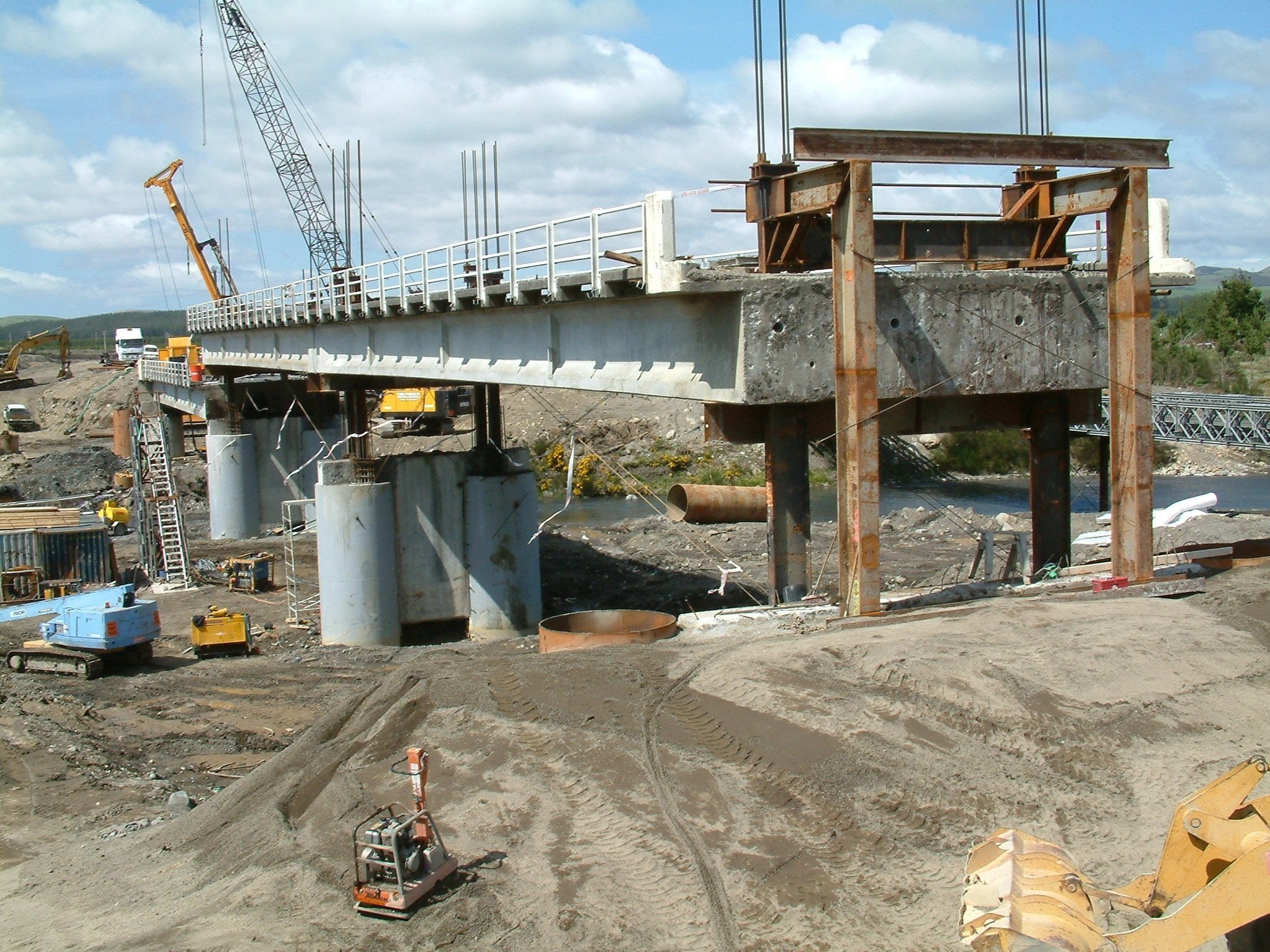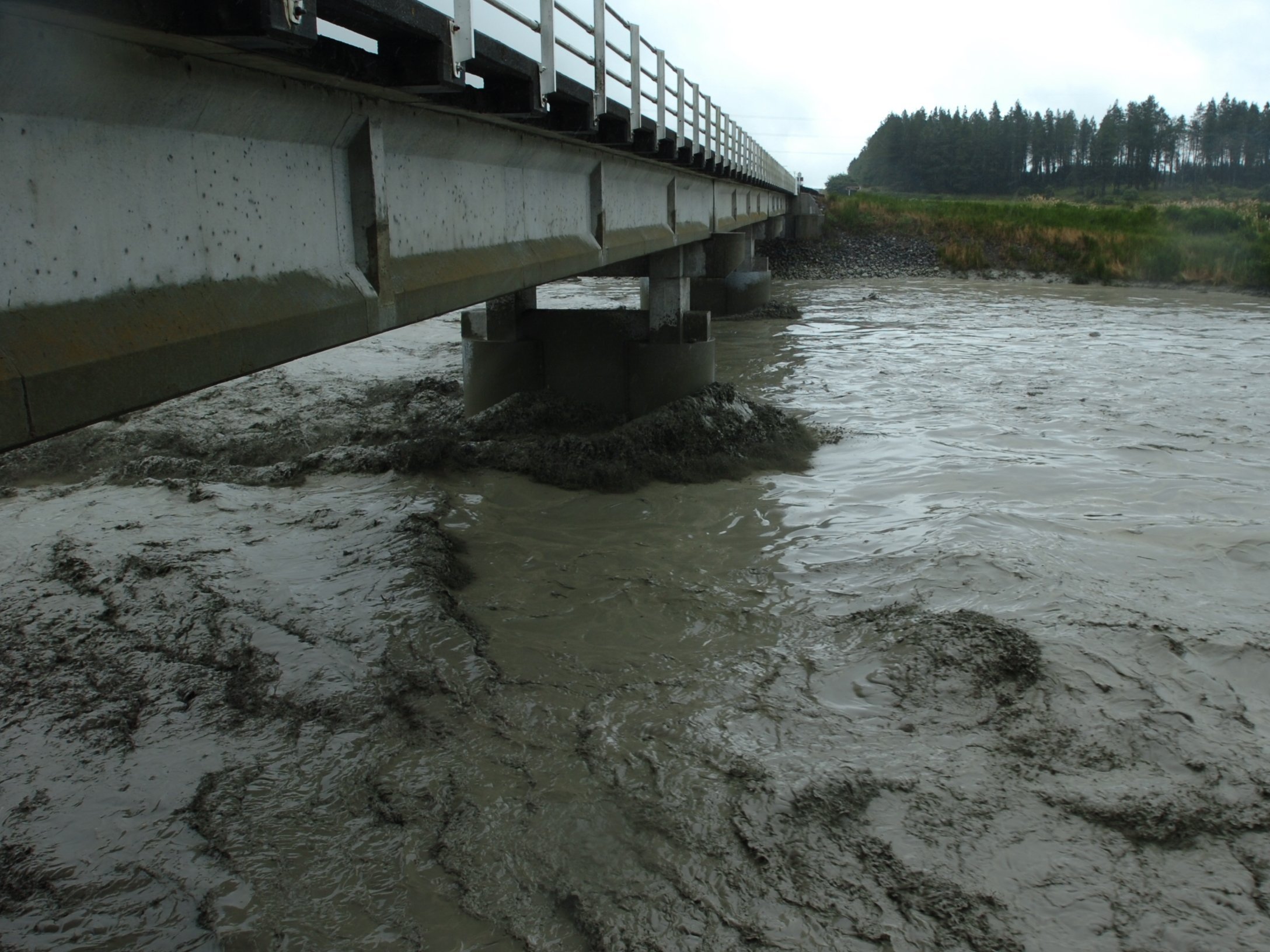70th Commemoration of the Tangiwai Disaster - Dr Harry Keys
How the Tangiwai Disaster has led to more resilient communities.
Written by Dr Harry Keys
Tangiwai Rail Bridge During Lahar March 2007 - Image Geoff Mackley
The 70th commemoration of the Tangiwai Disaster has provided opportunities to demonstrate about how communities can live with an active volcano like Ruapehu. Canadian Dam Engineer Juliana Tabet based in Calgary, Canada took the opportunity to study processes that led to the Tangiwai disaster and lessons learnt. These included the implementation of the first warning system two years after the official inquiry into the disaster, and ongoing refinements and precautions made since then to mitigate volcanic risks at Ruapehu up to the present day.
Mt Ruapehu - 1996 phase of the 1995-1996 eruption
Mt Ruapehu - 1996 phase of the 1995-1996 eruption
The article she wrote proved to be of international interest and was presented to a dam safety conference in California in September 2023. Her article has been reformatted for a New Zealand audience in association with the 70th commemoration with events on 21 January 2024 as well as 24 December.
The article summarises the complex and dynamic geomorphic and hydraulic processes that produce frequent volcanic mudflows (lahars) from Ruapehu including the large one on Christmas Eve 1953 and more recently on 18 March 2007. It also examines what has been done in Aotearoa New Zealand including the early development of what has become an internationally significant system of early warning and response. It provides an overview of ongoing volcano monitoring efforts including modern systems for remote monitoring the volcanic gas emission rate as potential indicators of future eruptions. The case study examines the successes and failures of the lahar warning systems, the more robust infrastructure developed to cope with lahars, and emergency management systems established by the agencies involved.
Challenges remain as not all risks from volcanoes like Ruapehu can be mitigated. People living around and visiting Tongariro National Park still need to be vigilant. But after 70 years, communities around the active volcanoes of Tongariro National Park have achieved a level of resilience far greater than a few decades ago due to agencies involved and the government taking a long-term perspective on risk management.
Please click here to be taken directly to the article written by Tabet J., Baker M., & Keys H. 2023 70th anniversary of Tangiwai paper post-Dam safety conference.
SH49 Bridge being raised by 2 metres 13 Oct 04 to lift it above the level of the lahar as seen in the photo on the right - Picture Dr Harry Keys
Tangiwai Highway Bridge 18 Mar 07 During Lahar. Image Geoff Mackley
70th COMMEMORATIONS
The 24th of December 2023 marked 70 years since the Tangiwai disaster. Commemorations at the Tangiwai memorial are being organised by the Lions Clubs New Zealand, Central Government, the New Zealand Army, Ruapehu District Council, KiwiRail and Ngāti Rangi. The national memorial for the disaster will be held on Wellington Anniversary Weekend on Sunday, January 21, 2024.
A special trip aboard a vintage diesel train run by Glenbrook Vinatage Railway in association with Steam Incorporated will depart Paekakariki at 6.50am on the 21st of January and arrive in Tangiwai at 11.50am in time for the 1pm national memorial service.
More information about this service can be found on the following pages
Glenbrook Vintage Railway For train bookings. & Whanganui Chronicle - News article about the event.






